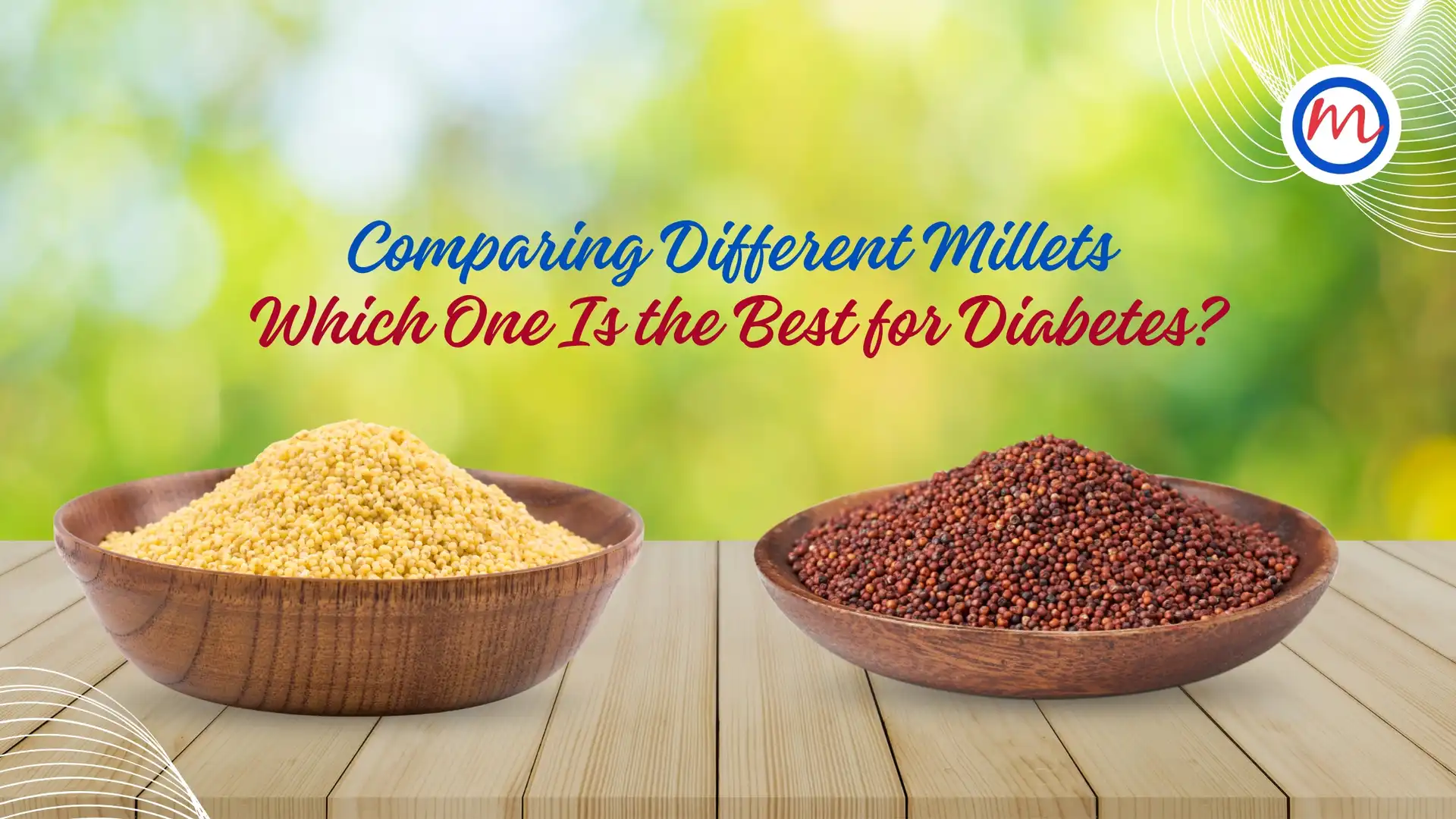Comparing Different Millets: Which One Is the Best for Diabetes?
Millets have gained immense popularity in recent years as superfoods, particularly for individuals with diabetes. These ancient grains are packed with fibre, protein and essential nutrients, making them an excellent choice for maintaining stable blood sugar levels. But with various types of millets available, which one is the best for diabetes? Let’s compare different millets based on their glycaemic index (GI), nutrient content, and overall benefits for blood sugar management.
-
Understanding the Glycaemic Index of Millets
The glycaemic index (GI) is a crucial factor when selecting foods for diabetes management. Foods with a low GI release glucose gradually into the bloodstream, preventing sudden spikes in blood sugar levels.
Here’s a comparison of the GI values of different millets:
- Foxtail Millet: GI 50-54 (Low GI)
- Barnyard Millet: GI 41-45 (Low GI)
- Little Millet: GI 52-55 (Low GI)
- Kodo Millet: GI 49-55 (Low GI)
- Pearl Millet: GI 55-68 (Moderate GI)
-
Nutritional Profile of Different Millets
Each millet type has a unique nutritional profile that contributes to its benefits for diabetes management.
Foxtail Millet
- High in dietary fibre and complex carbohydrates
- Rich in iron and protein
- Helps in reducing bad cholesterol levels
Barnyard Millet
- Lowest in carbohydrates among all millets
- High in protein and antioxidants
- Helps in managing weight and blood sugar effectively
Little Millet
- High in magnesium, which improves insulin sensitivity
- Rich in fibre, aiding digestion and satiety
- Lowers the risk of cardiovascular diseases
Kodo Millet
- Rich in antioxidants and polyphenols
- Helps in regulating blood glucose levels
- Aids in weight loss and digestion
Pearl Millet
- Rich in magnesium, which supports insulin function
- Contains healthy fats and fibre
- Helps in reducing hunger pangs and overeating
Finger Millet (Ragi)
- High calcium content, beneficial for bone health
- Contains resistant starch, which slows down glucose absorption
- Rich in amino acids and iron
-
Which Millet is Best for Diabetes?
Based on the GI values and nutrient composition, barnyard millet and foxtail millet emerge as the best choices for diabetes management due to their low GI and high fibre content. Little millet and kodo millet are also excellent options as they help in regulating blood sugar levels effectively.
-
How to Include Millets in a Diabetes-Friendly Diet
To maximise the benefits of millets for diabetes, consider the following tips:
- Replace White Rice with Millets: Use millets instead of polished rice for meals to stabilise blood sugar levels.
- Make Millet-Based Breakfasts: Opt for millet porridge, dosa, or upma for a nutrient-dense start to the day.
- Use Millets in Rotis and Breads: Replace refined flour with millet flour for rotis, chapatis, or baked goods.
- Prepare Millet Salads: Add cooked millets to salads for an extra dose of fibre and protein.
- Combine Millets with Pulses: Pairing millets with legumes enhances protein intake and improves satiety.
-
Precautions and Considerations
While millets are beneficial, they should be consumed in moderation. Excessive intake may lead to digestive discomfort due to their high fibre content. Additionally, individuals with thyroid issues should consult a healthcare professional before consuming millets regularly, as some varieties contain goitrogens that may interfere with thyroid function.
Conclusion
Millets are an excellent addition to a diabetes-friendly diet due to their low GI, high fibre content, and rich nutrient profile. Among them, barnyard millet, foxtail millet, little millet and kodo millet stand out as the best choices for blood sugar management. By incorporating these nutritious grains into daily meals, individuals with diabetes can enjoy better glucose control, improved digestion and enhanced overall health.
If you are looking to improve your diabetes management, consult a dietitian to personalise your millet-based meal plan for the best results.



